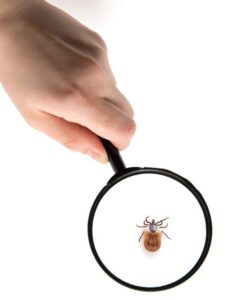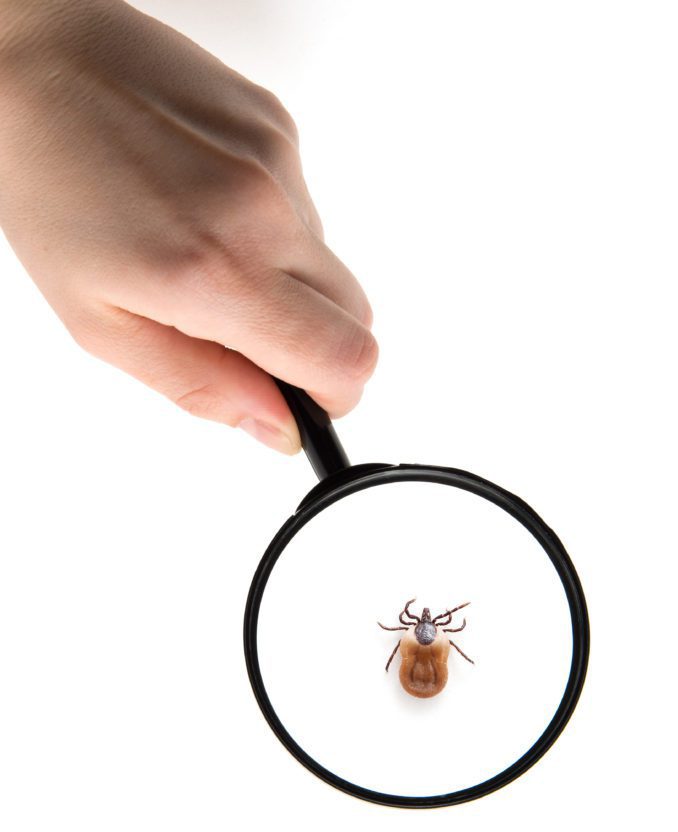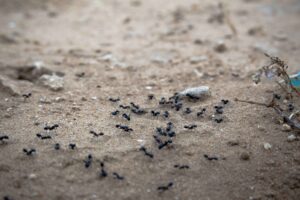 Although fleas and ticks are more common among homes with pets, these nuisances can find their way into any home. While fleas are tiny insects that feed on blood, ticks are arachnids that feast on blood to reproduce. In every instance, fleas and ticks are unwanted pests that should be dealt with quickly and carefully.
Although fleas and ticks are more common among homes with pets, these nuisances can find their way into any home. While fleas are tiny insects that feed on blood, ticks are arachnids that feast on blood to reproduce. In every instance, fleas and ticks are unwanted pests that should be dealt with quickly and carefully.
Recognizing Fleas and Ticks
Fleas are very tiny but can still be seen by the naked eye. They are usually ⅛ of an inch long with a rounded shape and larger abdomen. Fleas have six legs and are brownish in appearance. Fleas can seem to “hop” from place to place and leave behind itchy bites. These pests enjoy moist, warm places and like to hide in tall grasses or rotting material.
Ticks, on the other hand, are larger, around ¼ to ½ inch in size. There is a wide variety of ticks, including dog ticks and deer ticks. Ticks have a hard, dark body with eight legs, tiny heads, and large abdomens. Ticks prefer shrubs, trees, or woodpiles to live in. Ticks search for a host by “questing” or waving their arms in a circular pattern. Once a host is found, ticks will feed for several days, causing its body to bloat. When they are done feeding, they will fall off their host.
Problems Caused by Fleas and Ticks
While fleas and ticks are very annoying, they can also be dangerous. These pests are known to carry diseases. Ticks especially are hazardous creatures and have been linked to Lyme disease, Rocky Mountain Spotted Fever, Tularemia, and more. The first sign of a possible tick infection is a red bullseye-like ring around the bite. This can spread, and other symptoms may also begin, such as headache, nausea, and fever. Seek medical attention if you suspect you may have an infection from a tick bite. Avoiding these pests altogether is the best option, and pest control is one of the best methods for prevention.
Pest Control for Fleas and Ticks
Getting rid of fleas and ticks begins with treating the yard around the house. A few simple treatment methods can go a long way in removing these pests for good. Trust our knowledgeable exterminators to help you keep your home safe from pesky fleas and ticks. First, expert exterminators will perform an inspection to look for signs of fleas and ticks in and around the yard. Next, a treatment plan is formed to actively destroy existing fleas and ticks, including nesting sites, and keep them from returning. Interior and exterior treatments are safe and friendly for both people and pets alike. After applying treatment, exterminators will return at a later date to ensure the effectiveness of the treatment and retreat if required.
Defend your home against fleas and ticks with help from our professionals at Pest Force. Call us today to schedule a consultation with the best, so we can start working on a treatment plan that is right for you.
FAQs
How Can I Tell the Difference Between Fleas and Bedbugs?
Bed bugs are a reddish brown color and are flat and shaped like a seed. Fleas are also a reddish brown color, but their body is more of an oval shape that is skinny and long instead of flat. Fleas are usually smaller than bed bugs and will seem to hop around instead of scurry from place to place.
Do Ticks Come Out in the Winter?
The American Dog Tick and Lone Star Tick are usually not active in winter. Ticks usually go into dormancy at around a temperature of 35 degrees. However, some types of ticks can still be active in winter, especially if the weather is above 45 degrees and the ground is dry, not wet with snow, ice, or rain. Ticks don’t die unless the temperature gets very cold, around 14 degrees or colder.
How Long Do Fleas and Ticks Live For?
Depending upon several environmental factors, fleas can live anywhere from several weeks to a few months, and newly hatched fleas must feed before they can lay eggs. Because Of a short life cycle, fleas can reproduce very quickly, potentially turning into an infestation before your very eyes. Ticks also lay eggs that become larvae, then nymphs, then adults, much like fleas. They must also feed at least once in each life cycle stage to survive. Unlike fleas, their life cycle may take up to three years to complete. While this may not lead to an infestation, ticks can be dangerous, passing on diseases to pets and humans, one of many reasons why you still want to do what you can to eliminate these pests from coming inside your home.



